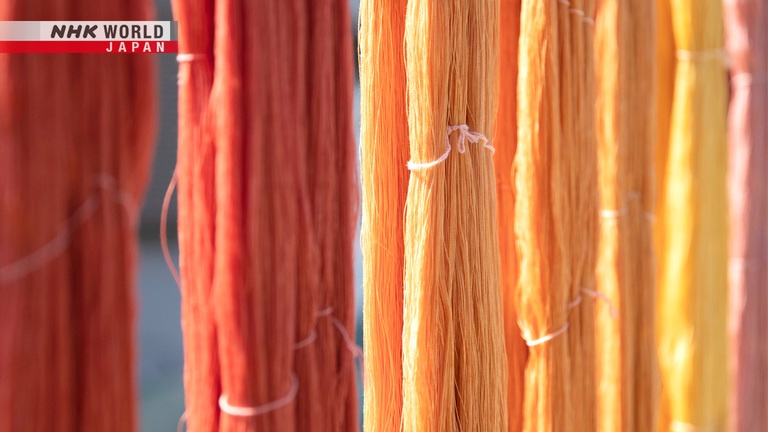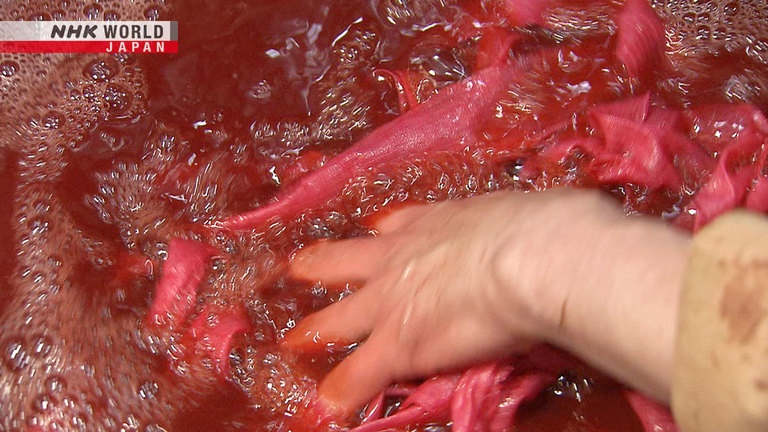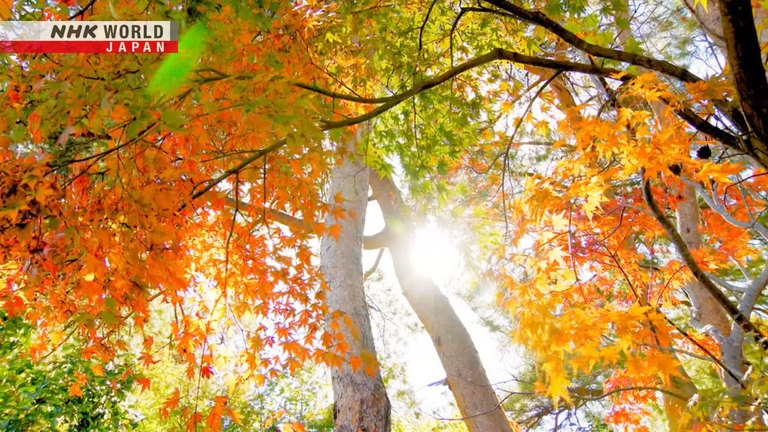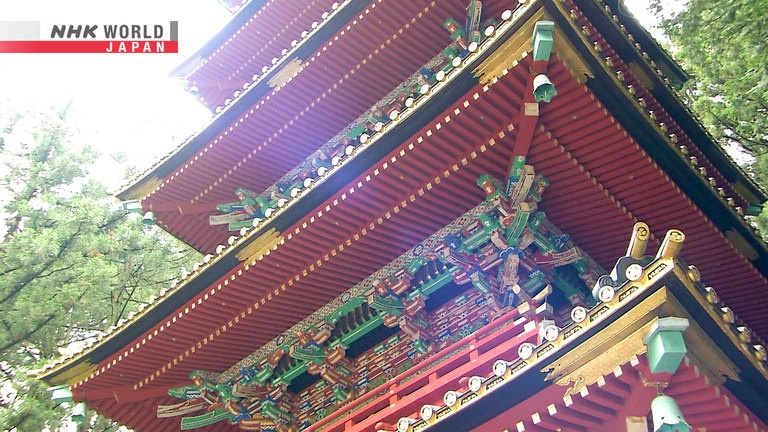Red
The Japanese language is rich in words and expressions influenced by nature, history and culture. This episode looks at words related to the color red. Red is deeply embedded in Japanese culture. Not only are there said to be over 100 different names for red in the Japanese language, but the color is also used to describe nonvisual concepts. From his home in Kyoto Prefecture, poet and literary translator Peter MacMillan guides us through these words and the culture behind them.




Transcript
"Yukigesho."
"Karakurenai."
The Japanese language is rich in unique expressions that reflect nature and culture.
Magical Japanese.
Today's theme is "aka," or the color red.
Hello, I'm Peter MacMillan.
Japan is a long, narrow country with many rivers and mountains, is abundant with nature, and has four seasons.
The Japanese, taking notice of the most subtle differences in the colors of the flowers and plants around them, came up with myriad ways of describing different colors.
There are said to be over 100 different names for the color "red," all of which are beautiful and elegant.
Let's take a look at some Japanese words related to "red."
"akaneiro."
"Iro" means color.
"Akaneiro" is the color of pigment taken from the "akane" plant.
It's a muted red with a yellowish hue.
In modern-day Japan, "akaneiro" is often used to describe the setting sun: The sunset colors the sky a beautiful "akaneiro."
"akaneiro."
"akaneiro."
"kurenai."
This color is extracted from the "benibana" plant.
Compared to "akaneiro," it's a more vivid shade of red.
"kurenai."
"kurenai."
This color, "kurenai," also known as "beni," is written with this Chinese character.
The colors that were used in makeup in the past in Japan were mostly red, white, and black.
Red, or "beni," was considered a luxury item, and, at first, was only used by the nobility.
However, by the Edo period, the common people started to use "beni" in their makeup.
Even today, lipstick is called "kuchibeni," or "beni" applied to the mouth, and blush is called "hoobeni," meaning "beni" applied to the cheek.
Red is also used to express the beauty of nature.
"koyo."
"Ko" is another reading for "kurenai," and "yo" means leaf.
"Koyo" refers to both the phenomenon whereby leaves change color in autumn, and to the colorful leaves themselves.
"koyo."
"koyo."
I am sure that many would agree that the beauty of the autumn leaves in Japan is truly breathtaking.
There are spots around the country that are known for their autumn leaves, but there is one place that is particularly famous.
Nikko is a tourist spot in Tochigi Prefecture, about two hours by train north of Tokyo.
More than 10 million people visit every year, and it's especially popular during the autumn "koyo" season.
The Japanese have enjoyed the beauty of red autumn leaves since ancient times, and they're often mentioned in classical Japanese waka poetry.
Such beauty unheard of
even in the age of the raging gods -
the Tatsuta River tie-dyeing its waters
in autumnal colors.
Such beauty unheard of
even in the age of the raging gods -
the Tatsuta River tie-dyeing its waters
in autumnal colors.
As we can see in this poem, for the Japanese poets of ancient times - as today - the maple leaves of autumn represented the pinnacle of beauty.
"momijigari."
"Momijigari" means going to the mountains to view the fall colors.
"Momiji" means "Japanese maple tree," but here it also represents other plants whose leaves change color in autumn.
"Gari" comes from "kari," or hunting.
It captures the keen fondness people in Japan have for beautiful autumn scenery.
"momijigari."
"momijigari."
There is a place in Nikko where you can experience still another kind of red.
Nikko Toshogu is a shrine dedicated to Tokugawa Ieyasu, the first shogun in the Edo period.
The shrine is designated a UNESCO World Heritage site.
Many structures, including the famous "omote-mon" gate, the "goju-no-to" five-storied tower, and the elaborate "tozai kairo" corridor, feature a certain color: "shuiro."
Often referred to as vermillion, it's a shade of red with a stronger touch of yellow than "akaneiro."
The pigment is made from mercury, which works as a preservative.
The color is also believed to ward off evil spirits.
Because of this, "shuiro" is often used at shrines and temples.
The red color used in shrines and temples is considered an auspicious color.
Let's have a look at some of the ways that red is embedded in Japanese culture.
"kohakumaku."
This red-and-white celebratory curtain is hung at entrance and graduation ceremonies, weddings, and other events that mark the start of a new chapter.
And this is a red hat and red vest that people receive as gifts to celebrate their 60th birthday.
The vest is known as a "chanchanko."
"Aka" can refer to things other than the color red.
Dawn, when the sun is coming up, is known as "yoake."
The "ake" in "yoake" and "aka" have the same etymological roots.
They are both associated with "something becoming clear," or "to make something clear."
"makka na uso."
"Makka" combines "aka" with "ma," meaning very or purely, and refers to a vibrant red.
It also describes how something is undeniable or obvious.
"Uso" means a lie.
The phrase refers to an obvious lie that's hard to get away with.
For example: He told me he got a perfect score on the exam.
That's a "makka na uso" - complete lie!
I know he failed because I just caught a glimpse of his exam paper.
"makka na uso."
"makka na uso."
"aka no tanin."
"Tanin" refers to people with whom you have no social or family ties.
In some Japanese words, "aka" is used to show emphasis - here, it emphasizes the lack of connection.
Sometimes the phrase is used sarcastically, like this: Can't you two get along better?
I'm afraid not.
We might be married, but in the end
we're "aka no tanin" - complete strangers.
"aka no tanin."
"aka no tanin."
Well, what do you think?
My fellow Japanese learners, you are no "aka no tanin" - or strangers - to me!
Let's continue to discover the beauty of the Japanese language together.
See you next time. Bye, bye.